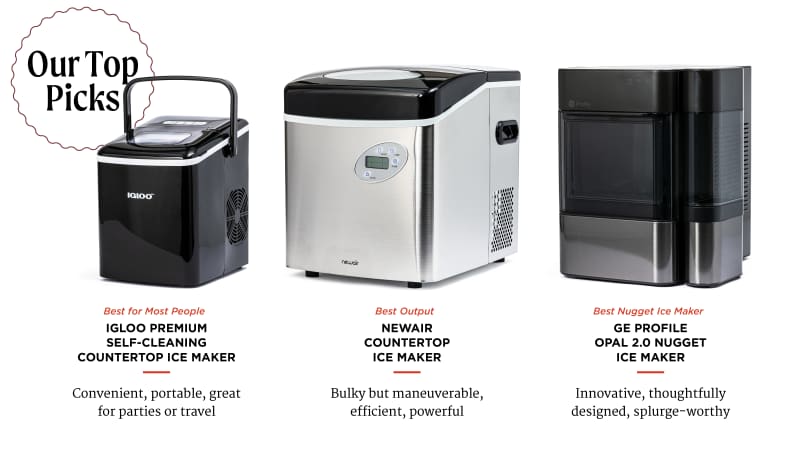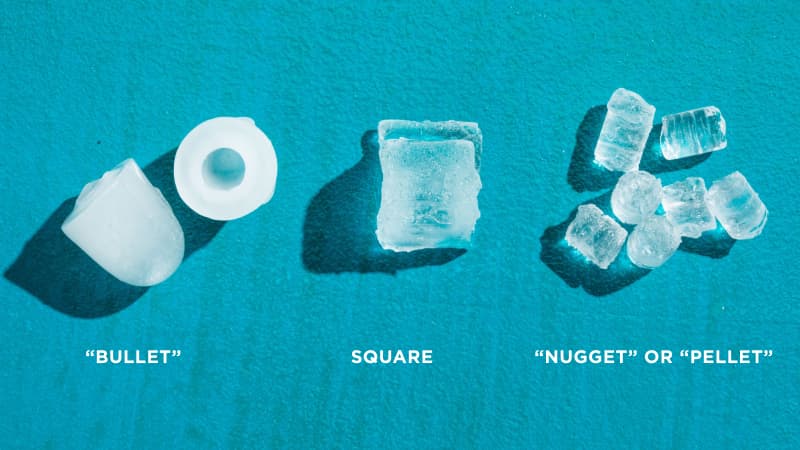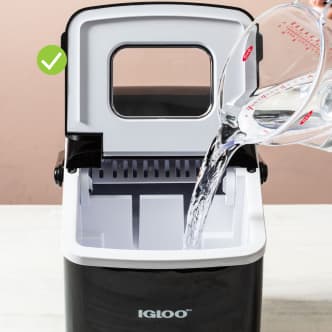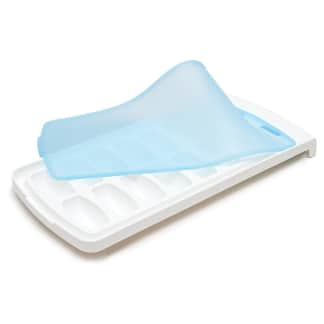If you’re not getting enough ice from your freezer ice maker or trays, a countertop ice maker could be a good option. We liked two models that produce hollow, cylindrical, “bullet”-style ice. The IGLOO Premium Self-Cleaning Countertop Ice Maker is our favorite compact model. It’s lightweight and easy to carry thanks to its cooler-style handle, and it was impressively speedy for a smaller model. For those with larger spaces who are interested in quickly making a lot of ice, we suggest the Newair Countertop Ice Maker, which can produce nearly 2 pounds of ice per hour. It was bulky and heavy but simple to use. We also named the pricey GE Profile Opal 2.0 Nugget Ice Maker as our favorite nugget ice maker. It was the fastest and easiest to use of the nugget-style machines.

Countertop ice makers are ideal for people whose freezers don’t have built-in ice makers and who aren’t satisfied with the hassle or small capacities of ice trays. They’re also a more portable option for home bars, dorm rooms or studios, and boats or RVs. Many people use countertop models 24/7 to always have ice on hand, while some folks only bring them out for parties or trips and store them when they’re not in use.
To make ice, you fill the reservoirs through openings on the front or at the top of the machines. Some models also use external tanks mounted on their sides. Similar to commercial ice makers or the devices in home freezers, countertop ice makers use a compressor filled with refrigerant to cool metal ice molds and freeze water into one of several cube shapes. The ice drops into collection bins, ready to be scooped out for the next frosty drink. All the machines have sensors that monitor ice levels and restart the machines if the ice gets low. But ice makers aren’t freezers in and of themselves. They’re not built to keep ice cold indefinitely because they’re not circulating frigid air as a freezer does. As unused ice in the bins begins to melt, the water collects under the bins and is recirculated to make more ice.

The machines we tested make three different types of ice. The majority make “bullet” ice, which is cylindrical and hollow with one domed end, just like its namesake. Other models make classic square cubes that you can find at most bars and restaurants. A few machines make “nugget” or “pellet” ice, the wonderfully crunchy, tiny ice cylinders that are popular at soda fountains and some fast food joints. (For more information, see FAQ “How are different ice shapes made?”) We named winners for most of the machine styles we tested, and we found some common factors that you should look for when shopping.

What to Look For
- Speedy Ice Production: Our favorite models were fast, producing ice quickly after startup and continuing to churn out cubes efficiently over time. The speediest models were capable of making nearly 2 pounds of ice per hour. They also effectively sensed when ice had melted or been removed and kicked into ice-making mode quickly.
- Simple, Clear Controls and Displays: We liked machines that operated using only a few clearly marked buttons, with displays or indicator lights that plainly showed the status of the ice makers.

- Effective Self-Cleaning Cycles: Gunk or limescale can build up quickly inside the machines, so cleaning them often is important to prevent damage to the ice makers or off flavors in the ice. We liked models with self-cleaning cycles because they did the majority of the work for us. We merely filled their reservoirs with vinegar or bleach solutions, started their self-cleaning cycles, and then repeated the process with clean water.
- Convenient Drains: When cleaning an ice maker or putting it away between uses, you need to drain it completely. Our favorite models had drains that came with hoses, which were easy to direct into sinks without moving the ice makers very much. Among hoseless models, we liked those with drain plugs that were located under the units’ front corners, making them easier to maneuver over a sink. Drain plugs with large tabs that were easy to grab and pull were best.

- Discrete Cubes: We preferred models that made separate ice cubes, instead of forming large frozen-together blocks of ice that we had to break up ourselves.
Nice to Have
- Handles: A couple models had handles: either cooler-style handles that swung up and over from the back or indentations in their sides meant for grasping. Carrying these models was significantly easier than maneuvering models without any handholds.
- Side Tanks: With some models, you have the option to purchase a water tank that connects to the side of the machine to supplement the water supplied by their standard, built-in reservoirs. The side tanks held up to 3 quarts of water, which made enough ice to last for two days of routine use at home.
What to Avoid
- Slow Ice Production: Some models took as long as 30 minutes to produce their first ice cubes, and some yielded less than 12 ounces of ice an hour—not enough for most people’s needs.
- Overly Complicated or Overly Simple Controls: Displays with too many symbols or numbers made it hard to know what modes the machines were in with a single glance. Other machines had controls and indicator lights that were too simple, often relying on a single button to toggle between functions without confirmation that we had made any changes.
- Machines without Automatic Cleaning: Machines without automatic cleaning cycles provided no way to access and descale all the internal components. Some of these models’ manuals provided instructions on disassembling certain parts for cleaning, but this was a big headache.
- Poorly Designed Drains: The drain plugs on some ice makers were inconveniently located on the side or at the back of the machines. It was a hassle to reposition or lug around these models so that we could drain them over the sink.


Some machines had reservoirs in their tops with small openings (left); we often spilled when trying to fill them. We liked machines with reservoirs with large openings that we filled from the front (right).
- Poorly Designed Reservoirs: Some models’ reservoirs were filled through small holes in the machines’ tops. We always spilled water when trying to fill them.
- Frozen-Together Cubes: Some machines deposited ice in solid sheets that we had to break apart ourselves. This was often difficult, especially as more and more sheets accumulated into a stacked, solid mass.

The Tests
- Unpack, set up, and clean the machines according to manufacturer instructions
- Turn on the ice makers, noting elapsed time and ice quality of first production cycle (using smallest ice setting when applicable)
- Continue to run the machines, noting quality and amount of ice produced in 1 hour (first using smallest ice setting, then using largest ice setting when applicable)
- Continuously run the ice makers over several days, noting ice storage ability and effectiveness of recirculation functions
- Test machines using external tanks or faucet hookups when applicable
- Have additional testers operate the ice makers in their home kitchens
How We Rated
- Performance: We measured how much ice the machines made and how quickly they made it. We also examined the machines’ ice quality.
- Ease of Use: We evaluated how difficult it was to remove ice from the machines, fill them with water, and drain them. We also noted how simple the machines’ controls were to operate, and whether their displays were easy to interpret.
- Setup and Cleaning: We assessed how easy the ice makers were to unbox, set up, and clean according to manufacturer instructions. We also noted whether they were especially noisy or bulky.


















